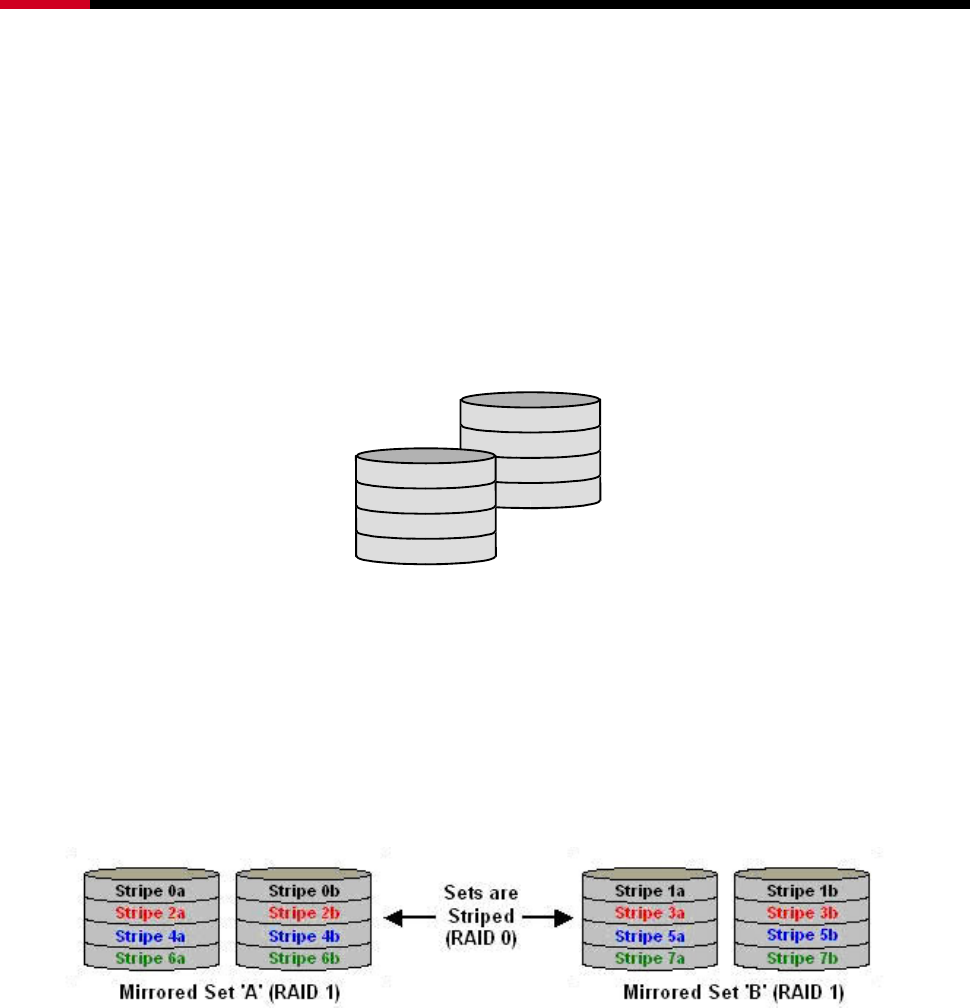
4 Bay SATA to eSATA 3.5” HDD RAID Storage System RSV-S4-X User Manual
12
2.3.2 DISK MIRRORING (RAID 1)
Disk mirroring creates an identical twin for a selected disk by having the data simultaneously
written to two disks. This redundancy provides instantaneous protection from a single disk
failure. If a read failure occurs on one drive, the system reads the data from the other drive.
RAID 1 sets are comprised of two drives, and a third drive can be allocated as a spare in case
one of the drives in the set fails. If the sizes of the disk segments are different, the smallest
disk segment will limit the overall size of the RAID Group.
Bl
oc
k
0
Bl
oc
k 1
Bl
oc
k 2
Bl
oc
k
3
Bl
oc
k
0
Bl
oc
k 1
Bl
oc
k 2
Bl
oc
k
3
2.3.3 DISK MIRRORING AND STRIPING (RAID 10)
RAID 10 combines the features of both RAID 0 and RAID 1. Performance is provided through
the use of Striping (RAID 0), while adding the fault tolerance of Mirroring (RAID 1). The
implementation of RAID 10 requires four drives. The drives are assigned as two sets of striped
pairs.
The data is written to RAID Group A, which is mirrored (RAID 1) and provides data
redundancy. Alternating blocks of data are then striped across another RAID 1 mirrored set,
shown as Set B in the figure above. This provides improved speed.
Under certain circumstances, a RAID 10 set can sustain multiple simultaneous drive failures.


















